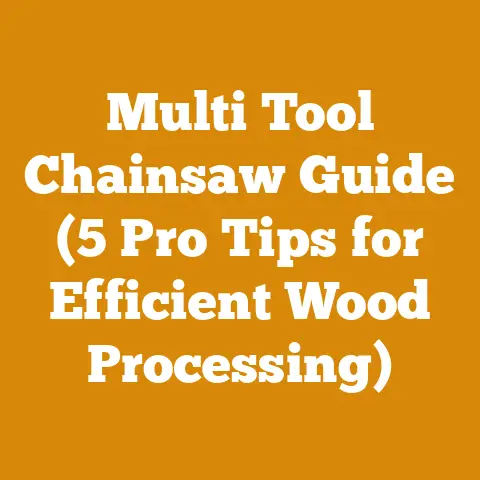665a Vermeer Stump Grinder Tips (5 Pro Inspection Checks)
Innovation in stump grinding has revolutionized land clearing and landscaping, transforming what was once a back-breaking manual task into a streamlined, efficient process.
The Vermeer 665A stump grinder, in particular, represents a significant leap forward in this technology.
As someone deeply involved in wood processing, logging, and firewood preparation for over two decades, I’ve seen firsthand how advancements like these have reshaped our industry.
Vermeer 665A Stump Grinder: 5 Pro Inspection Checks for Peak Performance
The Vermeer 665A is a powerful machine, but like any piece of heavy equipment, it requires regular inspection and maintenance.
These five checks are crucial for maintaining its performance and ensuring your safety.
1. Cutter Wheel and Teeth Inspection: The Heart of the Grind
The cutter wheel and teeth are the business end of any stump grinder.
They’re responsible for the actual grinding, so their condition directly impacts the machine’s effectiveness.
Why it Matters: Dull or damaged teeth drastically reduce grinding efficiency, increase fuel consumption, and put unnecessary strain on the engine and hydraulic system.
Damaged teeth can also become projectiles, posing a serious safety hazard.
Step-by-Step Inspection:
- Safety First: Disconnect the spark plug wire to prevent accidental starting.
Engage the parking brake and chock the wheels for added security. - Visual Assessment: Carefully inspect each tooth for signs of wear, chipping, cracking, or damage.
Look for rounded edges, indicating dullness.- Pro Tip: Keep a logbook of when you last sharpened or replaced teeth.
This helps track wear patterns.
- Pro Tip: Keep a logbook of when you last sharpened or replaced teeth.
- Tooth Security: Check that each tooth is securely fastened to the cutter wheel.
Use the correct wrench (typically a torque wrench) to ensure bolts are tightened to the manufacturer’s specified torque.- Torque Specs: Consult your Vermeer 665A operator’s manual for the correct torque specifications for the tooth bolts.
Overtightening can damage the bolts and teeth; undertightening can cause them to loosen during operation.
Typically, these are between 60-80 ft-lbs, but always verify with your manual.
- Torque Specs: Consult your Vermeer 665A operator’s manual for the correct torque specifications for the tooth bolts.
- Cutter Wheel Condition: Inspect the cutter wheel itself for cracks, bends, or other damage.
Pay particular attention to the welds and areas around the tooth mounting points.- Case Study: I once worked on a Vermeer 665A where the cutter wheel had a hairline crack near a weld.
We initially missed it during a routine inspection.
However, after a few hours of grinding, the crack worsened, leading to significant vibration and ultimately requiring a costly wheel replacement.
This experience taught me the importance of meticulous inspection.
- Case Study: I once worked on a Vermeer 665A where the cutter wheel had a hairline crack near a weld.
- Tooth Rotation: Rotate the cutter wheel manually and listen for any unusual noises, such as grinding or scraping.
This could indicate worn bearings or other internal problems.
Corrective Actions:
- Sharpening: Sharpen dull teeth using a specialized carbide grinder.
Follow the manufacturer’s instructions for proper sharpening techniques and angles.- Tool Specification: I prefer using a bench grinder with a diamond grinding wheel for sharpening carbide-tipped teeth.
A good quality grinder will cost around $200-$400.
- Tool Specification: I prefer using a bench grinder with a diamond grinding wheel for sharpening carbide-tipped teeth.
- Replacement: Replace damaged or excessively worn teeth immediately.
Use only genuine Vermeer replacement teeth or high-quality aftermarket alternatives that meet Vermeer’s specifications.- Cost: Replacement teeth typically cost between $10-$20 each, depending on the type and brand.
- Wheel Repair: If you find cracks or other damage to the cutter wheel, consult a qualified welding professional for repair.
In some cases, wheel replacement may be necessary.- Safety Note: Never attempt to weld or repair a cutter wheel yourself unless you are a certified welder with experience in repairing heavy equipment.
2. Hydraulic System Inspection: The Power Behind the Grind
The hydraulic system provides the power to move the cutter wheel, swing the boom, and raise/lower the grinding head.
Maintaining this system is crucial for optimal performance and longevity.
Why it Matters: Hydraulic leaks can lead to decreased power, increased fuel consumption, and potential environmental contamination.
Low hydraulic fluid levels can damage the pump and other components.
Contaminated fluid can cause premature wear and failure of hydraulic components.
Step-by-Step Inspection:
- Visual Inspection: Check all hydraulic hoses, fittings, and connections for leaks.
Look for signs of oil seepage, cracks, or damage.- Insight: Pay close attention to areas where hoses are subjected to friction or bending.
These are common points of failure.
- Insight: Pay close attention to areas where hoses are subjected to friction or bending.
- Hydraulic Fluid Level: Check the hydraulic fluid level in the reservoir.
Ensure it is within the recommended range specified in the operator’s manual.- Fluid Type: Use only the hydraulic fluid recommended by Vermeer.
Using the wrong type of fluid can damage the system.
Vermeer typically specifies a high-quality AW (anti-wear) hydraulic fluid.
- Fluid Type: Use only the hydraulic fluid recommended by Vermeer.
- Hydraulic Fluid Condition: Inspect the hydraulic fluid for contamination.
Look for a milky or cloudy appearance, which indicates the presence of water.
Also, check for debris or sediment.- Data Point: I’ve found that regularly changing the hydraulic fluid (every 500 hours or annually, whichever comes first) significantly extends the life of the hydraulic pump and other components.
- Hydraulic Cylinder Inspection: Check the hydraulic cylinders for leaks, damage, or corrosion.
Pay particular attention to the cylinder rods and seals.- Pro Tip: Extend and retract the cylinders fully to check for smooth operation and to identify any binding or sticking.
- Hydraulic Pump Noise: Listen for unusual noises from the hydraulic pump during operation.
A whining or squealing noise can indicate cavitation or other problems.
Corrective Actions:
- Leak Repair: Tighten loose fittings or replace damaged hoses or seals to stop hydraulic leaks.
- Hose Specification: When replacing hydraulic hoses, use only hoses that meet or exceed the SAE J517 standards for hydraulic hose.
- Fluid Top-Off: Add hydraulic fluid to the reservoir to bring the level within the recommended range.
- Fluid Change: If the hydraulic fluid is contaminated, drain and replace it with fresh fluid.
- Procedure: Follow the manufacturer’s instructions for proper fluid draining and filling procedures.
Be sure to dispose of used hydraulic fluid properly.
- Procedure: Follow the manufacturer’s instructions for proper fluid draining and filling procedures.
- Cylinder Repair: If a hydraulic cylinder is leaking or damaged, have it repaired or replaced by a qualified hydraulic technician.
- Pump Repair: If the hydraulic pump is making unusual noises, have it inspected and repaired by a qualified mechanic.
3. Engine Inspection: The Power Plant
The engine is the heart of the Vermeer 665A, providing the power to drive the hydraulic system and cutter wheel.
Proper engine maintenance is essential for reliable performance.
Why it Matters: A poorly maintained engine can lead to decreased power, increased fuel consumption, and costly repairs.
Overheating, oil leaks, and other engine problems can quickly escalate into major issues.
Step-by-Step Inspection:
- Oil Level and Condition: Check the engine oil level and condition.
Ensure the level is within the recommended range on the dipstick.
Inspect the oil for a milky or gritty appearance, which indicates the presence of water or contaminants.- Oil Type: Use the engine oil recommended by Vermeer.
Typically, this is a heavy-duty diesel engine oil with a viscosity grade of 15W-40.
- Oil Type: Use the engine oil recommended by Vermeer.
- Coolant Level: Check the coolant level in the radiator or coolant reservoir.
Ensure it is within the recommended range. - Air Filter: Inspect the air filter for dirt and debris.
A clogged air filter can restrict airflow to the engine, reducing power and increasing fuel consumption.- Filter Type: The Vermeer 665A typically uses a two-stage air filter system.
Check both the primary and secondary filters.
- Filter Type: The Vermeer 665A typically uses a two-stage air filter system.
- Fuel System: Inspect the fuel lines, fuel filter, and fuel pump for leaks or damage.
- Fuel Grade: Use only the recommended grade of fuel.
Typically, this is diesel fuel with a cetane rating of 40 or higher.
- Fuel Grade: Use only the recommended grade of fuel.
- Starting System: Check the battery terminals and connections for corrosion.
Ensure the battery is fully charged.- Voltage Check: Use a multimeter to check the battery voltage.
A fully charged battery should have a voltage of around 12.6 volts.
- Voltage Check: Use a multimeter to check the battery voltage.
- Exhaust System: Inspect the exhaust system for leaks or damage.
A leaking exhaust system can pose a safety hazard.
Corrective Actions:
- Oil Change: Change the engine oil and filter at the recommended intervals (typically every 100-200 hours).
- Procedure: Follow the manufacturer’s instructions for proper oil draining and filling procedures.
- Coolant Top-Off: Add coolant to the radiator or coolant reservoir to bring the level within the recommended range.
- Air Filter Replacement: Replace the air filter if it is dirty or damaged.
- Fuel System Repair: Repair any fuel leaks and replace the fuel filter at the recommended intervals.
- Starting System Maintenance: Clean corroded battery terminals and connections.
Charge or replace the battery as needed. - Exhaust System Repair: Repair any exhaust leaks or damage.
4. Undercarriage and Frame Inspection: Stability and Mobility
The undercarriage and frame provide the foundation for the Vermeer 665A.
Their condition directly impacts the machine’s stability and mobility.
Why it Matters: Damage to the undercarriage or frame can compromise the machine’s stability, making it difficult to operate safely and efficiently.
Worn or damaged tracks or tires can reduce traction and increase the risk of accidents.
Step-by-Step Inspection:
- Frame Inspection: Inspect the frame for cracks, bends, or other damage.
Pay particular attention to the welds and areas around the mounting points for the engine, hydraulic system, and cutter wheel.- Insight: Frame damage is often caused by overloading the machine or operating it on uneven terrain.
- Track/Tire Condition: Inspect the tracks or tires for wear, damage, or improper inflation.
Check the track tension or tire pressure to ensure it is within the recommended range.- Track Tension: Adjust the track tension according to the manufacturer’s specifications.
Too much tension can cause premature wear; too little tension can cause the tracks to slip. - Tire Pressure: Maintain the correct tire pressure to ensure optimal traction and stability.
- Track Tension: Adjust the track tension according to the manufacturer’s specifications.
- Wheel Bearings: Check the wheel bearings for play or looseness.
Worn wheel bearings can cause excessive vibration and premature tire wear. - Steering System: Check the steering system for smooth operation and responsiveness.
- Test: Drive the machine forward and backward, turning the steering wheel to the left and right.
Listen for any unusual noises or binding.
- Test: Drive the machine forward and backward, turning the steering wheel to the left and right.
- Parking Brake: Verify that the parking brake is functioning properly.
Corrective Actions:
- Frame Repair: If you find cracks or other damage to the frame, consult a qualified welding professional for repair.
- Track/Tire Replacement: Replace worn or damaged tracks or tires.
- Wheel Bearing Replacement: Replace worn wheel bearings.
- Steering System Repair: Repair any steering system problems.
- Parking Brake Adjustment: Adjust the parking brake as needed.
5. Safety System Inspection: Protecting Yourself and Others
The safety system is critical for protecting yourself and others from injury.
Regular inspection and maintenance of these systems are essential.
Why it Matters: A malfunctioning safety system can increase the risk of accidents and injuries.
It’s not just about protecting yourself; it’s about protecting anyone nearby.
Step-by-Step Inspection:
- Emergency Stop Switch: Verify that the emergency stop switch is functioning properly.
Press the switch and ensure that the engine shuts down immediately.- Test: After pressing the emergency stop switch, attempt to restart the engine.
It should not start until the switch is reset.
- Test: After pressing the emergency stop switch, attempt to restart the engine.
- Safety Guards: Inspect all safety guards and shields to ensure they are in place and in good condition.
- Reminder: Never operate the machine with missing or damaged safety guards.
- Warning Labels: Ensure that all warning labels are legible and in place.
- Replacement: Replace any missing or damaged warning labels.
You can usually order replacement labels from Vermeer.
- Replacement: Replace any missing or damaged warning labels.
- Operator Presence System (If Equipped): If your machine is equipped with an operator presence system, verify that it is functioning properly.
This system is designed to shut down the engine if the operator leaves the seat.- Testing: With the engine running, lift yourself slightly off the seat.
The engine should shut down within a few seconds.
- Testing: With the engine running, lift yourself slightly off the seat.
- Personal Protective Equipment (PPE): Ensure you have and consistently use the appropriate PPE, including:
- Eye Protection: Safety glasses or a face shield to protect your eyes from flying debris.
- Hearing Protection: Earplugs or earmuffs to protect your hearing from the loud engine noise.
- Gloves: Heavy-duty work gloves to protect your hands.
- Steel-Toed Boots: Steel-toed boots to protect your feet from falling objects.
- Leg Protection: Chaps or other leg protection to guard against flying debris.
Corrective Actions:
- Switch Repair: Repair or replace any malfunctioning emergency stop switches.
- Guard Replacement: Replace any missing or damaged safety guards.
- Label Replacement: Replace any missing or damaged warning labels.
- System Repair: Repair any malfunctioning operator presence systems.
- PPE Enforcement: Make sure you and any other operators consistently wear the appropriate PPE.
Beyond the Five Checks: Additional Tips for Vermeer 665A Maintenance
While these five checks are crucial, there are other aspects of maintenance that deserve attention.
- Greasing: Regularly grease all grease fittings according to the manufacturer’s recommendations.
This helps to lubricate moving parts and prevent wear.- Grease Type: Use the grease type recommended by Vermeer.
Typically, this is a lithium-based grease.
- Grease Type: Use the grease type recommended by Vermeer.
- Belt Inspection: Inspect the belts for wear, cracks, or damage.
Replace belts as needed.- Tension: Check the belt tension and adjust as necessary.
- Storage: When storing the machine for extended periods, take steps to protect it from the elements.
Cover the machine with a tarp or store it in a shed.- Battery Maintenance: Disconnect the battery or use a battery maintainer to prevent it from discharging during storage.
- Operator Training: Ensure that all operators are properly trained on the safe and efficient operation of the Vermeer 665A.
- Resources: Vermeer offers operator training programs and resources.
Case Study: Preventing Catastrophic Failure Through Preventative Maintenance
I once consulted with a landscaping company that had a Vermeer 665A.
They were experiencing frequent breakdowns and high repair costs.
After conducting a thorough inspection, I found that they were neglecting basic maintenance tasks.
Strategic Advantages of Proper Maintenance
Beyond the immediate benefits of reduced breakdowns and lower repair costs, proper maintenance offers several strategic advantages:
- Increased Uptime: A well-maintained machine is more reliable and will spend less time out of service for repairs.
- Limited Resources: They may have limited access to specialized tools, equipment, and expertise.
- Budget Constraints: They may be operating on a tight budget and may be tempted to cut corners on maintenance.
- Time Constraints: They may be juggling multiple responsibilities and may not have the time to perform regular maintenance.
- Remote Locations: They may be operating in remote locations where access to parts and service is limited.
Despite these challenges, it is essential for DIYers and small-scale logging businesses to prioritize maintenance.
By following a few simple steps, they can keep their equipment running smoothly and safely:- Follow the Manufacturer’s Recommendations: Read the operator’s manual and follow the manufacturer’s recommendations for maintenance.
- Develop a Maintenance Schedule: Create a schedule for regular inspections, fluid changes, and lubrication.
- Keep Records: Keep records of all maintenance performed.
- Seek Expert Advice: Don’t hesitate to seek expert advice from qualified mechanics or equipment dealers.
- Invest in Quality Parts: Use only genuine Vermeer parts or high-quality aftermarket alternatives.
Practical Next Steps
Now that you have a better understanding of the five pro inspection checks for your Vermeer 665A stump grinder, here are some practical next steps you can take:
- Review Your Operator’s Manual: Familiarize yourself with the manufacturer’s recommendations for maintenance and safety.
- Schedule a Maintenance Day: Set aside a day to perform a thorough inspection of your machine.
- Gather Your Tools and Supplies: Make sure you have all the necessary tools, fluids, and parts on hand.
- Perform the Five Pro Inspection Checks: Follow the step-by-step instructions outlined in this article.
- Address Any Issues: Repair any leaks, replace worn parts, and make any necessary adjustments.
- Develop a Maintenance Schedule: Create a schedule for regular inspections, fluid changes, and lubrication.
- Keep Records: Keep records of all maintenance performed.
- Prioritize Safety: Always wear the appropriate PPE and follow safe operating procedures.
By following these steps, you can ensure that your Vermeer 665A stump grinder is running optimally, safely, and efficiently for years to come.
Remember, a little preventative maintenance goes a long way!
It will save you time, money, and potentially prevent serious injuries.






